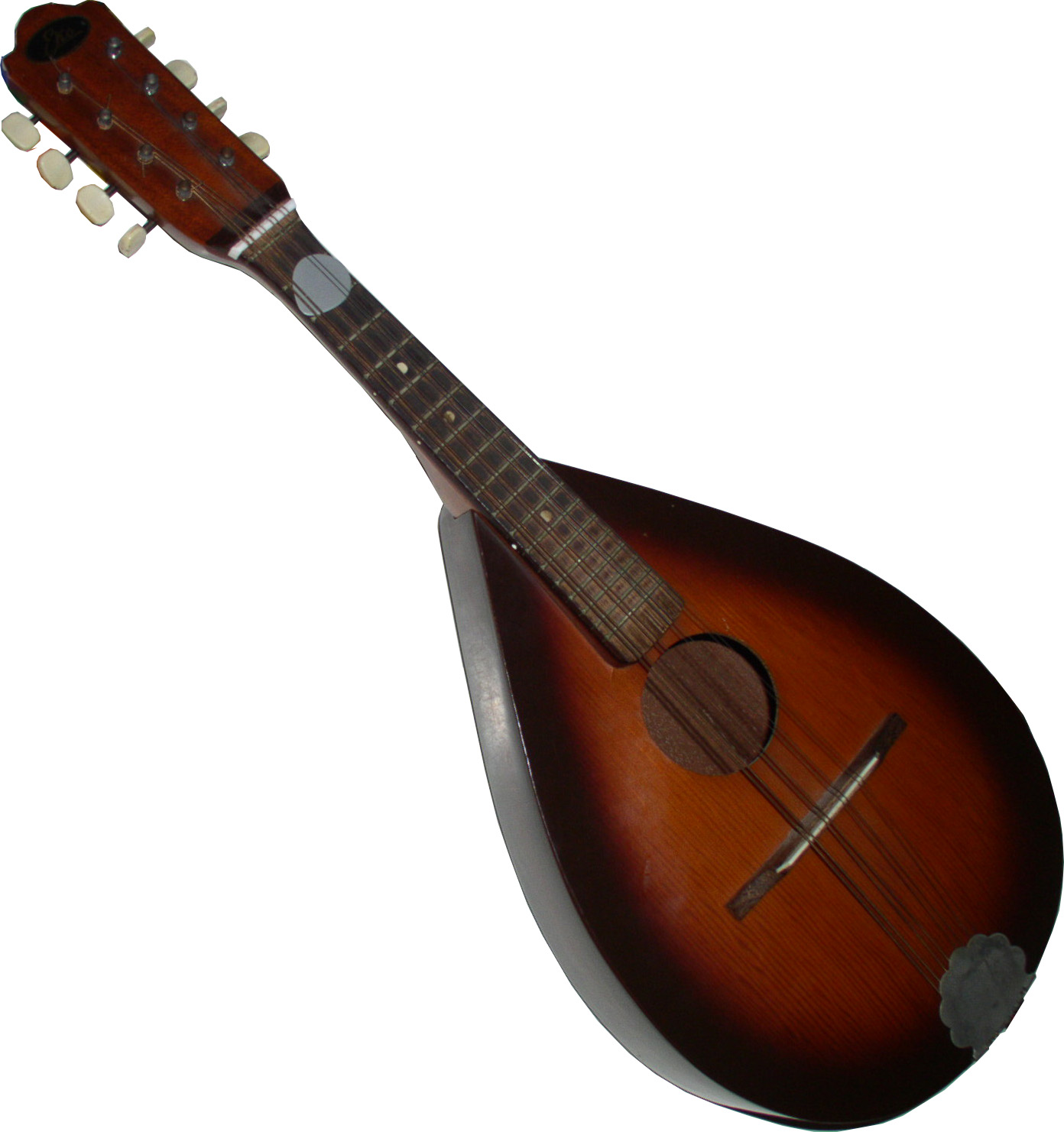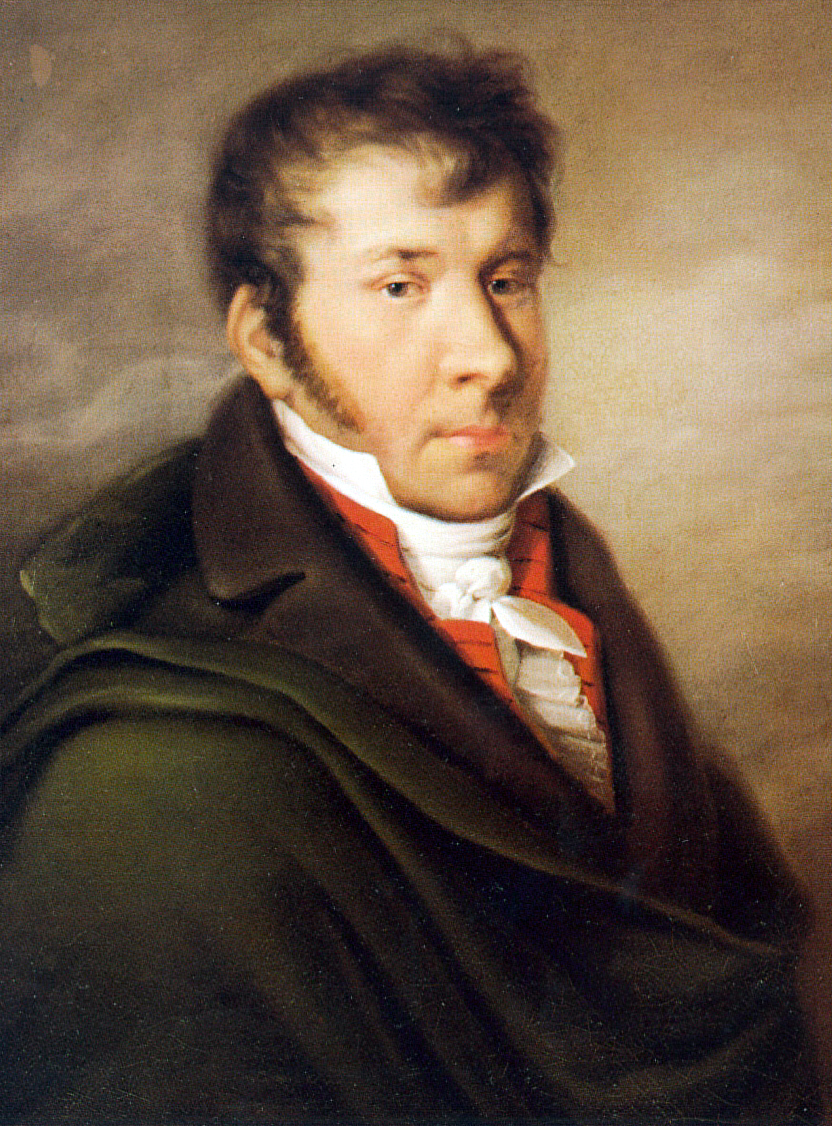Arrigoni: Courante adagio (CDS7878)
I’m going to jump straight to the Classical period, when the mandolin’s popularity started to become overshadowed by new developments in composition and performance. Before it did, however, many composers continued to write attractive works for the instrument, including Hoffmann (1770–c.1814), Hummel (1778–1837) and Beethoven (1770–1827).
Around 1800, the six-course mandolin experienced a renaissance in cultivated Viennese circles, fed by a healthy supply of new works for the instrument. Little is known about the life and works of the Viennese mandolin player and composer Johann Hoffmann. It wasn’t until the mid-twentieth century that his works were rediscovered; the originals are still to be found in Viennese libraries. The extreme difficulty of many of his sonatas shows that he must have been an outstanding instrumentalist. Here’s the last movement of his Sonata in D minor; the accompaniment is provided by the archlute.
Hoffmann: Allegro (8.557716)
Hummel was a child prodigy, a pupil and friend of Mozart, a virtuoso concert pianist, and a skilled composer in all genres (except the symphony). His Concerto for Mandolin and Orchestra dates from 1799 (there’s an 1816 version of the work for Piano and Orchestra). We join this performance partway through the finale.
Hummel: Rondo (CDS128)

Ludwig van Beethoven
© HNH International
Hummel knew Beethoven during his time in Vienna, though their relationship had its ups and downs. In 1796, Beethoven set out on a journey that took him to Prague, Dresden, Leipzig and Berlin, and it was in Prague that he wrote a group of pieces for mandolin. It’s been suggested that Beethoven may have become interested in the instrument through Wenzel Krumpholz, both a distinguished violinist in Vienna and a mandolin virtuoso. Beethoven is said to have taken violin lessons with Wenzel and was certainly on close terms with him. Carl Czerny, who became a pupil of Beethoven, recalls Krumpholz’s championship of Beethoven, at a time when the latter’s work was often misunderstood. It was Krumpholz who introduced the ten-year-old Czerny to Beethoven, a meeting recalled in some detail by Czerny in his memoirs.
Four of Beethoven’s single-movement works for mandolin and fortepiano survive. Here’s the Sonatina in C major.
Beethoven: Sonatina in C major (9.70289)

Raffaele Calace
Source: Wikipedia – Public Domain
We move on in time to music by Raffaele Calace (1863–1934), the son of a mandolin-maker who became a distinguished virtuoso of the instrument, creating new possibilities by technical modifications of the instrument. Calace makes use of just about every mandolin technique available to him: the tremolo, duo-style (two-part writing where the player keeps a tremolo going while simultaneously picking out struck accompaniments), harmonics, arpeggio patterns, left- and right-hand pizzicato, glissando runs, and cadenza passages.
Calace’s concertos, originally written for mandolin and piano, are substantial three-movement works. If a single musical example could demonstrate the range, emotion and expressiveness of the mandolin, it’s probably the slow movement of his Concerto No. 1, which we now hear in this extract.
Calace: Largo tranquillo (8.570434)
We finish with two works from the 21st century. The first is American composer Avner Dorman’s Mandolin Concerto, cast in three sections and introduced by the composer as follows:
“One of my favourite things as a composer is to discover and explore new instruments. When Avi Avital approached me to write Mandolin Concerto (2006), my acquaintance with the mandolin was fairly limited. As I got to know the instrument better, I discovered its diverse sonic and expressive possibilities.
Mandolin Concerto’s main conflicts are between sound and silence and between motion and stasis. What inspired me to deal with these opposites is the mandolin’s most basic technique – the tremolo, which is the rapid repetition of notes. The tremolo embodies both motion and stasis. The rapid movement provides momentum, while the pitches remain the same.
The second part is fast and dance-like and alludes to Middle Eastern music. It accumulates energy leading to a culmination at its end. The tremolo of the opening part is transformed into a relentless repetition in the bass – like a heartbeat.”
Here’s that second part.
Avner Dorman: Allegro (8.559620)
Finally, to a popular combination of instruments: mandolin and guitar. I’ve selected the last section from “ … after the quake: 5 Impressions from Murakami” by Thomas Allen LeVines (b. 1954). The work was written in 2009.
Haruki Murakami (b. 1949) is a best-selling Japanese writer whose books have been translated into some 50 languages. His collection of six short stories, … after the quake, was written between 1999 and 2000 in response to Japan’s 1995 Kobe earthquake. It features characters profoundly affected by the quake even if they only saw it on television or read about it in the newspapers. LeVines’ work comprises five musical sketches, the last of which is titled No. 5. Con moto – the locomotive is coming …
The composer says this movement “may allude to how approaching earthquakes have been compared to the sounds and sensations of immense trains rapidly and closely passing by survivors … The guitar surprisingly and unexpectedly repeats the motif of the approaching earthquake, and the repetitions grow always closer while the mandolin, first hesitantly, then furiously and inexorably plays a rapid perpetuum mobile based on Japanese shamisen technique. Musical quotes appear from sources as diverse as J. S. Bach, Olivier Messiaen and Jimi Hendrix. Finally, after a dramatic accelerando the earthquake reaches the end of the work with an enormous sforzando.”
LeVines: No. 5. Con moto – the locomotive is coming… (8.574060)







Very enjoyable! Delighted to have discovered your blog.